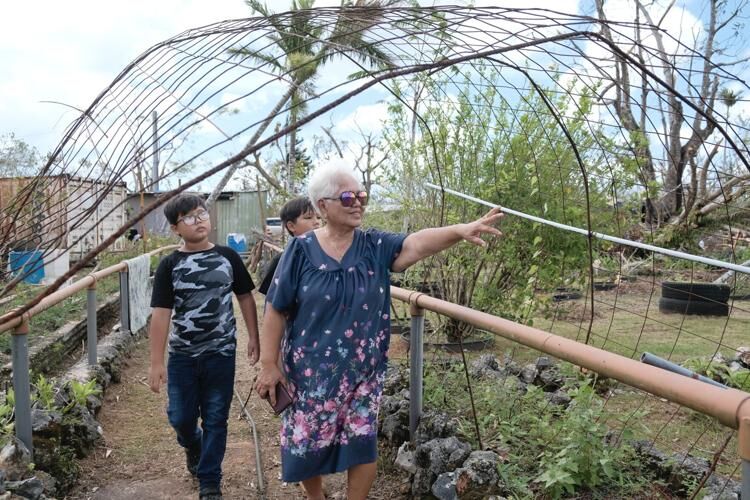HAGÅTÑA (The Guam Daily Post) — Farmers and ranchers who haven’t applied with the Guam Department of Agriculture for reimbursement for crops or livestock lost during Typhoon Mawar will get one more chance to do so.
While total crop loss from Mawar is estimated at between 90% and 100%, less than half of all the registered, bona fide farmers on Guam have applied to the Crop Loss Compensation Program, said Guam Department of Agriculture Director Chelsa Muna-Brecht.
The application deadline for the Crop Loss Program has been extended until next week. Anyone looking to apply can go to the agency’s Mangilao office to submit an application from June 28 to 30. Office hours are 8:30 a.m. to 4:30 p.m. The agency continues to experience phone issues after the typhoon.
Under Guam law, eligible farmers can receive up to $20,000 in compensation.
Muna-Brecht said only around 200 or so farmers and ranchers applied as of the June 20 deadline, despite over 700 bona fide farmers being registered. And not all applicants are registered — unregistered farmers can also qualify for aid.
“It came to our attention that there were front-line workers who’ve been working 16-hour days and were unable to apply,” she said. “We also discovered that there were elderly farmers in the north with no transportation who couldn’t apply. We wanted to reopen the application process to allow for those who, because of circumstances beyond their control, couldn’t apply.”
Anyone looking to apply can bring in their ID and receipts for all purchases of products they used to help establish their crop production — fuel, fertilizers, pesticides, pots, labor — and turn in their applications the same day.
If there aren’t receipts, “we still come and do an inspection, trying to determine the acreage of what they’ve planted for their harvest,” Muna-Brecht said.
Compensation covers only production loss, not losses on harvest and sales. There’s no average payout determined yet, she said, as officials continue to conduct inspections.
Registered commercial farmers — there are 207 of them, according to the Agriculture director — get first consideration for the program. Bona fide subsistence farmers, some of whom may be operating out of their backyards, are considered after that. Last in line are the unregistered commercial and subsistence farmers.
Muna-Brecht encouraged anyone engaged in agriculture, large- or small-scale, to register.
“All of this is possible because we have a bona fide farmer registry program, a free program,” she said. “Anyone who’s engaged in farming or agriculture, one should come into the Department of Agriculture. This is a prime example of why this registration or this certification fees pay off, because, in times of a disaster, you’re prioritized.”
Awaiting funding
Agriculture is awaiting funding for the program. Lawmakers during an emergency legislative session Monday voted to pass Bill 134-37 to authorize a transfer of $2 million from the Rainy Day Fund to the agency so the Crop Loss Program could be funded.
The bill is now sitting beside several other typhoon recovery measures on Gov. Lou Leon Guerrero’s desk for review. On Friday, Adelup spokesperson Krystal Paco-San Agustin said no measures were expected to be signed yet.
Muna-Brecht said her agency doesn’t have any other money to pay for the program.
There was some controversy this week at the Legislature over the $2 million for the program. Sens. Frank Blas Jr., Joanne Brown, Chris Duenas, Tom Fisher and Jesse Lujan ultimately voted against passing the measure during Monday’s emergency session, as no one from the Department of Agriculture was present to account for the need for the funding or how it would be used.
Muna-Brecht said the agency followed the letter of Guam law, which required her staff to start accepting applications after the typhoon, and for her to submit a funding request to lawmakers within 15 days of the disaster.
Agriculture oversight chair Sen. Will Parkinson, who introduced Bill 134, expressed the same opinion.
<span>Only around 200 or so farmers and ranchers applied as of the June 20 deadline, despite over 700 bona fide farmers being registered. And not all applicants are registered — unregistered farmers can also qualify for aid.</span>













